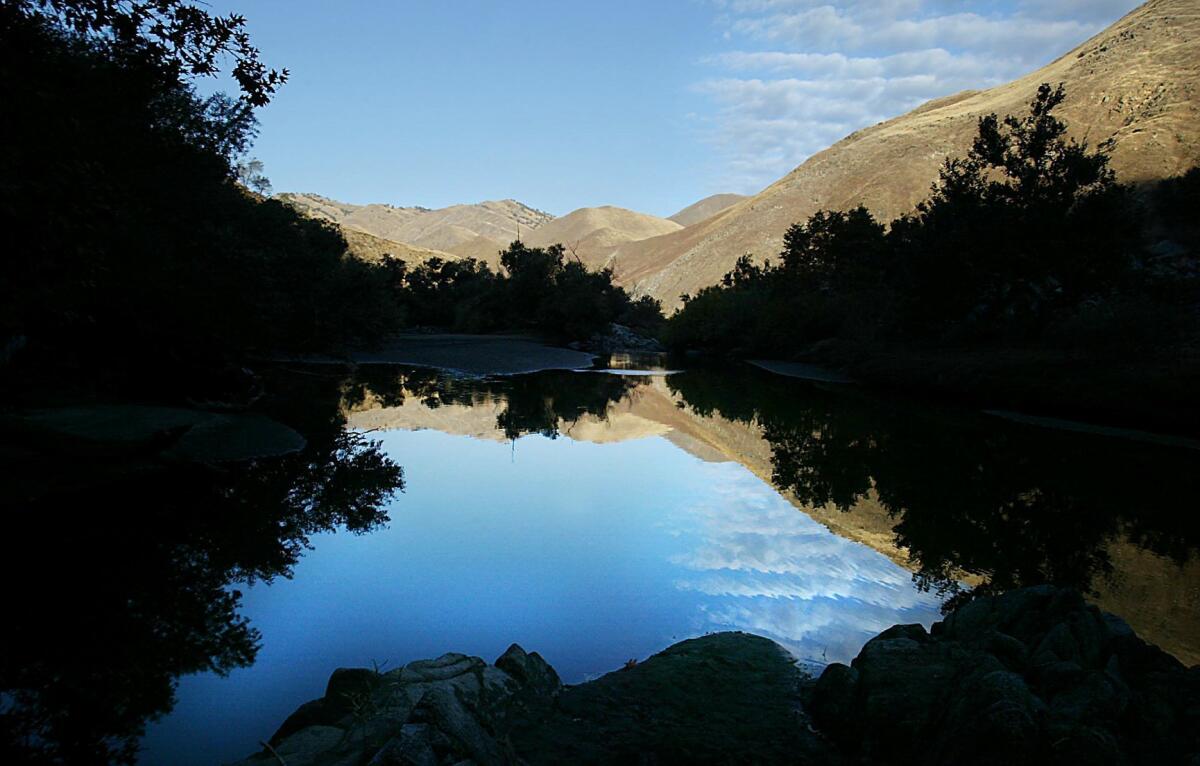Rights to California surface water far greater than average runoff

California over the last century has issued water rights that amount to roughly five times the state’s average annual runoff, according to new research that underscores a chronic imbalance between supply and demand.
That there are more rights than water in most years is not news. But UC researchers say their study is the most comprehensive review to date of the enormous gap between natural surface flows and allocations.
Of 27 major California rivers, rights on 16 of them exceed natural runoff. Among the most over-allocated are the San Joaquin, Kern and Stanislaus rivers in the San Joaquin Valley and the Santa Ynez River in Southern California.
In theory, that difference is not necessarily a problem. It gives water agencies and irrigation districts with junior rights access to additional supplies during wet years, when runoff is above average and there is plenty to go around. But in reality, study co-author Joshua Viers said, it fosters unrealistic expectations for water that is often not available.
“It gives the public a false sense of water security,” said Viers, a UC Merced professor of water resources. For the most junior rights holders, he added, “It’s kind of like standing in line to get into a concert and they give you a ticket when they’re already at capacity. But you don’t know that you’ll never actually get in to see the show.”
The study, published online Tuesday in the journal Environmental Research Letters, analyzed public data from the State Water Resources Control Board, which administers water rights, and compared it with estimates of natural surface flow.
While the annual statewide flow averages 70 million acre feet, water rights issued since 1914 allocate 370 million acre feet. (An acre foot of water is sufficient to supply two households for a year.)
“What is the most compelling about this,” Viers said, is “that the appropriated rights are so much more than the actual full natural flow. In many cases, we’ve five to 10 times over-promised.”
Moreover, the state data base does not account for riparian rights granted to streamside landowners or pre-1914 rights, under which some irrigation districts and cities claim huge amounts of water. “So in many ways our estimate is a substantial underestimate of the total volume of rights,” he said.
Viers conducted the study with Ted Grantham, now a U.S. Geological Survey scientist, when Grantham was a postdoctoral researcher at UC Davis.
The authors say that the state board has spotty information on actual water use by rights holders, hampering its ability to do its job.
“We’re not lacking in technology and know-how,“ said Viers, who argued that the state is short on funding and “the political will” to develop information and monitoring systems to strengthen water rights oversight.
“We need both better information infrastructure and policy in order to make better decisions about water use in California,” he said.
Michael Hanemann, a UC Berkeley professor of environmental and resource economics who was not involved in the study, said the issue is not so much that the state has issued too many water rights. Rather, he said, California doesn’t properly enforce them — or in the case of 19th century rights, even know exactly who is entitled to what.
“Without supervision of distribution, appropriative water rights are meaningless: We do not have a coherent system for allocating water,” Hanemann said.
Amanda Montgomery, a water rights manager for the state board who is familiar with the Grantham-Viers research, said: “We have the system we have and we do our absolute best to implement it effectively … We’re always looking toward program improvements.”
[email protected]
Twitter: @boxall







